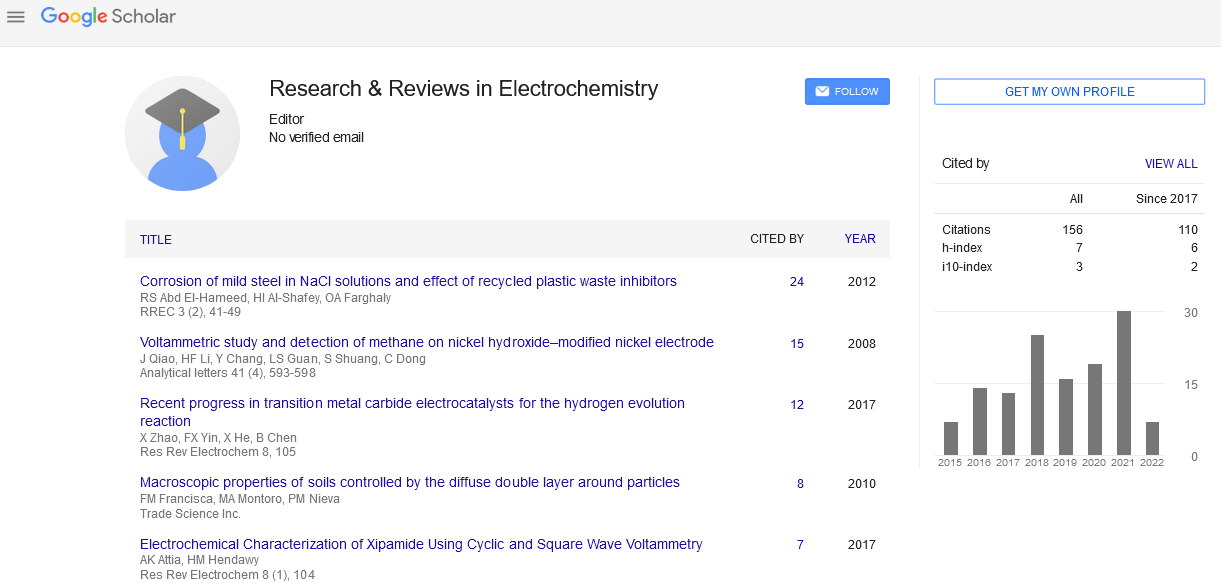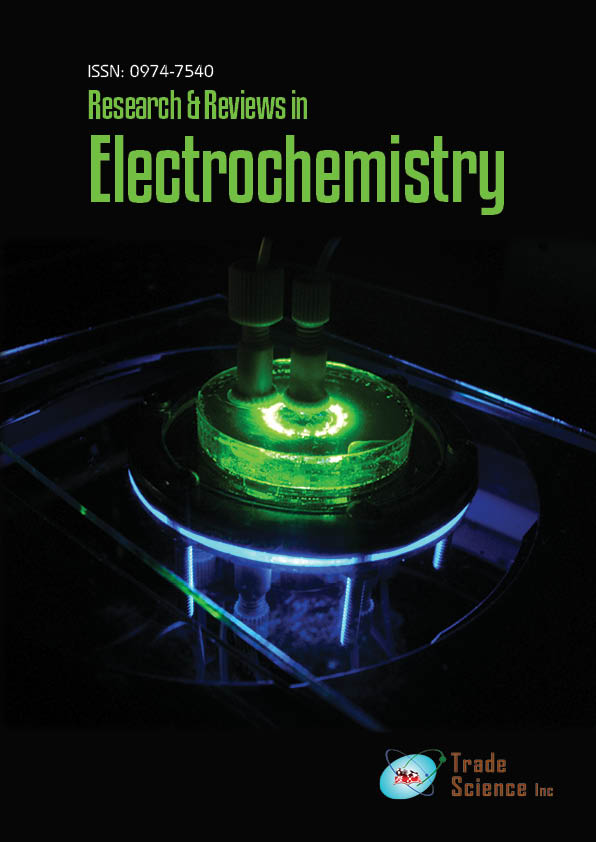Letter to the Editor
, Volume: 12( 4) DOI: 10.37532/0974-7540.22.12.4.247Graphene oxide improves electricity generation in soil microbial fuel cells and plant microbial fuel cells.
- *Correspondence:
- Gary Charles
Editorial Office, Research and Reviews in Electrochemistry, UK
E-mail:electro.med@scholarres.org
Received: 1-July-2022; Manuscript No. tsrre-22-72677; Editor Assigned: 15-July-2022; PreQC No. tsrre-22-72677 (PQ); Reviewed: 20-July2022; QC No. tsrre-22-72677 (Q); Revised: 25-July-2022; Manuscript No. tsrre-22-72677 (R); Published: 27-July-2022, DOI No. 10.37532/0974-7540.22.12.4.247
Citation:Charles G. Graphene oxide Improves Electricity Generation in Soil Microbial Fuel Cells and Plant Microbial Fuel cells. Res Rev Electrochem 2022;12(4):247.
Abstract
Graphene oxide (GO) was studied for its effects on electricity generation in soil microbial fuel cells (SMFCs) and plant microbial fuel cells (PMFCs). GO was added to soil at concentrations ranging from 0 to 1.9 gkg-1 and reduced for 10 days under anaerobic conditions. All SMFCs (GO-SMFCs) that used GO-incubated soils produced more electricity at a faster rate and in greater quantities than SMFCs that did not contain GO. The overall average electricity generation in GO-SMFCs containing 1.0 gkg-1 of GO was 40±19 mWm-2, which was significantly higher than the value of 6.6±8.9 mWm-2 generated by GO-free SMFCs in fed-batch operations (p<0.05). Cyclic voltammetry (CV) for GO-SMFC revealed an increase in catalytic current at the oxidative potential, with the CV curve indicating enhanced electron transfer from oxidation of organic substances in the soil by the reduced form of GO. The GO-containing PMFC also produced more electricity than the PMFC without any added GO, with the GO-PMFC producing 49 mWm-2 of electricity after 27 days of operation. This study shows that GO added to soil can be microbially reduced in soil and facilitates electron transfer to the anode in both SMFCs and PMFCs.
Introduction
The Microbial Fuel Cell (MFC), a system that uses microorganisms to convert chemical energy into electrical energy, is gaining popularity as a technology for recovering energy from organic residues. There are several types of sediment, or Soil Microbial Fuel Cells (SMFCs), which typically consist of sediment or wet soil sandwiched between two electrodes. These electrodes are placed on the sediment's bottom (anode) and either on the sediment's surface or suspended in the water phase (cathode). In some studies, electrons for the MFC were donated by organic matter excreted by plants, which are referred to as the Plant Microbial Fuel Cell (PMFC). SMFCs and PMFCs hold great promise not only for long-term electricity recovery from the environment, but also for their potential use in powering self-powered devices. Devices that monitor environmental parameters, sensors that monitor plant maturity and applications in bioremediation and heavy metal recovery from contaminated environments are examples of such applications.
A number of factors influence electrical productivity in SMFCs and PMFCs, including substrate oxidation speed, electron transfer to the anode, proton transfer from the anode to the cathode, and oxygen reduction at the cathode. To improve the productivity of these systems in SMFCs and PMFCs, a variety of modifications and conditions have been investigated. The quality and quantity of microbial populations developed in SMFCs and PMFCs have a direct impact on the system's electrical productivity. Modification of the anode is another important strategy for improving the performance of SMFCs and PMFCs. Several materials have been used to increase the surface area, allowing for the attachment of a greater number of microorganisms. Among these materials are graphite felt, graphite granules, Biochar, active carbon, and graphite grains.
It has recently been demonstrated that members of the genus Shewanella, which is well known for producing electricity, are capable of reducing Graphene Oxide (GO) to electrically conductive graphene. GO is a graphene intermediate product produced by chemical exfoliation of graphite. Microbial GO reduction occurred via respiratory Extracellular Electron Transfer (EET), with GO serving as the terminal electron acceptor. It has been demonstrated that GO can enrich bacteria capable of EET, and the resulting reduced form of GO functions as an electrode with the attached bacteria. When microbial cultures were used, the addition of GO was found to improve electricity production at both the anode and the cathode in MFC. Graphene oxide has also received a lot of attention as a toxic chemical absorbent, particularly for heavy metals and organic pollutants. However, both GO and graphene have recently been reported to be toxic to a variety of living systems. Nonetheless, the potential ecological risk of GO in SMFCs and PMFCs may be mitigated by assuming that GO-based systems can control the redox state of heavy metals as pollutants, thereby reducing toxic metal uptake by plants.

